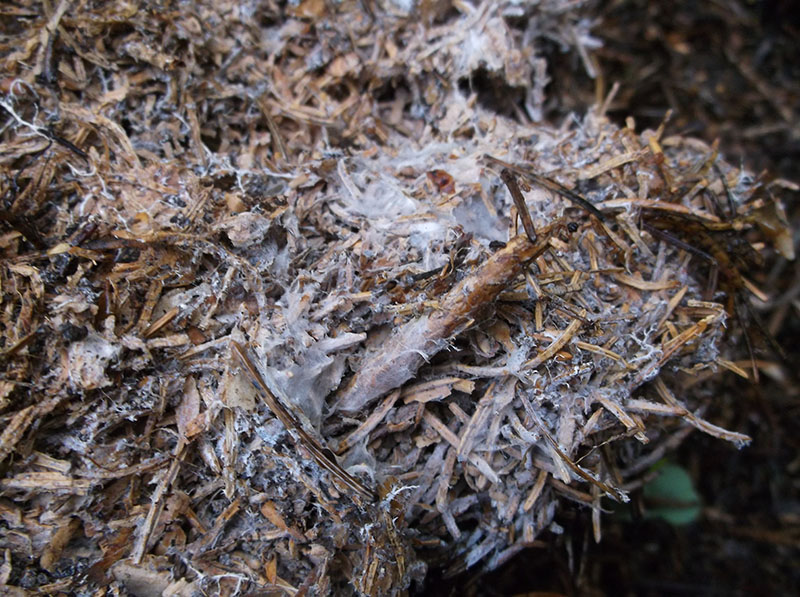Viktig melding!
Vi utfører for tiden omfattende vedlikehold som forberedelse til den nye nettstedet. I løpet av denne perioden kan du støte på følgende problemer:
- Bilder vises ikke
- Koblinger som er ødelagte eller fører til manglende sider
- Innhold som ikke vises riktig
- Utdatert eller feilaktig informasjon
- Funksjonelle elementer (som skjemaer eller knapper) fungerer ikke
- Feil eller uventet oppførsel
- Navigasjonsproblemer eller ødelagte menyer
Hvis du opplever noen av disse eller andre problemer, kan du gi oss beskjed ved å sende en e-post til teknisk@efferus.no . Tilbakemeldingene dine er uvurderlige for å hjelpe oss med å forbedre nettstedet. Takk for din tålmodighet og forståelse.
Mycelsenteret
NorskMushrooms are not only food and medicine. Mushrooms are a biotechnological tool that can help us create an entirely new kind of agriculture that can solve many of the pressing challenges today's farmers face.
The challenge
The main challenge of modern agriculture is that the soil is impoverished, poisoned by chemicals and acid rain , and that one of the main inputs ( Phosphorus ) is becoming a scarce resource.The soil wears down for each plowing and is impoverished when minerals and micronutrients are drawn out of the soil each harvest. Most fertilizers only restitute some minerals. Plants do ideally obtain a wide range of substances from the periodic system, while a few of these components are found in fertilizers, particularly NPK fertilizers. Plant deficiencies become consumer deficiencies. A widespread view is that many diseases are deficiency diseases that have their source in these kind of agricultural practices.
The soil is poisoned by an extensive use of pesticides and herbicides. Poisoning over time make it difficult to cultivate viable plants. Remnants of these poisons can trigger a wide range of potential diseases for long time consumers of the plants containing these remnants.
After decades of large-scale mining, phosphates are becoming scarce. Phosphate ions do form extremely insoluble compounds with elements such as iron, aluminum and calcium. All these are abundant in rocks and soil but they exist in an inaccesible form to plants and do spread extremely slowly spending many days to move a few millimeters.
Mycelsenteret
The field of Mycology that explores companion plating and modern farming practices is in its infancy. Some established knowledge exists and there are examples of old practices with companion planting mushrooms with food crops. Many fungi have the ability to remineralize the soil. Different fungi accumulate different minerals, and some fungi hyper accumulate certain minerals – both poisonous such as mercury and beneficial such as phosphorous. When saprophytes die, they release their accumulations and make them accessible to nearby plants. Many fungi secrete very powerful enzymes that break down bonds in petroleum products found in many herb- and insecticides, simply because these bonds are very similar to the chemical bonds found in trees. The purpose of establishing Mycelsenteret is to build up this base of knowledge and become a potential resource for agricultural change.The Mycel tsunami prosject
The Mycel tsunami project is the precursor to the establishment of Mycelsenteret. A mycel tsunami is an outdoor cultivated mushrooms field that spread to the surronding environment through an expanding mycal circle. Norway is ideal for outdoor cultivation of mushrooms, since it has the suitable climate and relatively little risk of industrial toxic waste. The project plan is to:1. Creating a visual guide of different organic cultivation techniques for different species of saprophytic mushrooms.

|
3. Cultivate some species of mushrooms with some vegetables in controlled field tests, to find out which union will prove to be the most beneficial to both fungus and plant. The template for the experiment will be the tests conducted at Fungi Perfecti's facilities in the Pacific Northwest in 1999 where they proved a 4-6 doubling of broccoli crops by companion planting with elm oyster mushroom.
4. Establish a spore- and gene bank. Outdoor cultivation of mushrooms depends on access to mycelium or spores of fungi that are suitable for outdoor cultivation where it grows. The most competitive genetic material is found in the fungus already growing in the surrounding area. A spore- and gene bank will make this endeavor accessible to the home cultivator.
